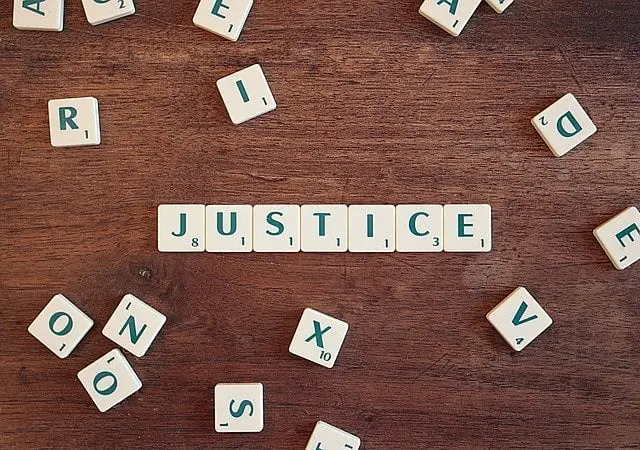In the realm of criminal law, back-to-back life sentences represent one of the most severe punishments a court can impose. This form of sentencing, where a convict must serve two or more life sentences consecutively, is reserved for the most heinous crimes, often reflecting the judiciary’s intent to prevent the most dangerous criminals from re-entering society. The purpose of this article is to delve into the complexities of these sentences, understanding their legal basis, application, and implications in the criminal justice system.
Understanding Back-to-Back Life Sentences
Back-to-back life sentences, also known as consecutive life sentences, are often imposed in cases involving multiple serious crimes, such as serial murders or large-scale terrorism. In these situations, a court may decide that a single life sentence does not adequately represent the severity of each individual crime committed. Consequently, judges order multiple life sentences to be served one after the other, rather than concurrently. This approach ensures that each crime is accounted for individually in the sentencing process.
The Legal Basis and Jurisdictional Variations
The legal foundation for imposing back-to-back life sentences varies across jurisdictions. In the United States, for instance, this sentencing is commonly used for multiple murders or particularly brutal crimes. The judicial system uses these sentences as a tool to underscore the gravity of the crimes and to provide a sense of justice to the victims and society. However, the application and interpretation of these sentences can differ significantly between states and federal courts.
In other countries, the approach to multiple life sentences can differ. Some nations, like Australia, allow for multiple consecutive life sentences but with a single minimum term, offering the possibility of earlier parole eligibility. The variation in the use of these sentences across different legal systems highlights the diverse approaches to punishment and rehabilitation in criminal justice worldwide.
High-Profile Cases and Public Perception
Numerous high-profile cases involving back-to-back life sentences have captured public attention and sparked debates on the purpose and effectiveness of such harsh sentencing. For instance, individuals like Gary Ridgway, known as the “Green River Killer,” and Terry Nichols, involved in the Oklahoma City Bombing, have received such sentences. These cases often raise questions about the goals of the criminal justice system, whether it’s retribution, deterrence, rehabilitation, or a combination of these.
Ethical and Legal Controversies
The imposition of back-to-back life sentences brings forth various ethical and legal controversies. Critics argue that such sentences may border on cruel and unusual punishment, especially in cases where parole is not an option. On the other hand, proponents maintain that these sentences are necessary for delivering justice, especially in cases involving multiple victims or particularly atrocious acts.
Conclusion: Balancing Justice and Rehabilitation
Back-to-back life sentences remain a contentious topic in criminal law. They reflect society’s attempt to balance the need for justice and public safety with the principles of rehabilitation and the possibility of redemption. As criminal law continues to evolve, the use and interpretation of these sentences will likely be the subject of ongoing legal, ethical, and societal debate.
Further Expansion on Back-to-Back Life Sentences
Rehabilitation Prospects
One critical aspect of the back-to-back life sentences debate centers around the prospects for rehabilitation. In the criminal justice system, rehabilitation is considered a key goal, aiming to transform offenders into law-abiding citizens. However, the imposition of consecutive life sentences often implies a negligible chance of release, raising questions about the feasibility and intent of rehabilitation in these cases. For instance, when a prisoner is aware that their likelihood of parole is virtually non-existent, the motivation for rehabilitation can be significantly diminished. This situation poses a challenge to correctional institutions and raises ethical questions about the goals of incarceration.
International Comparisons
Comparing how different countries approach multiple life sentences reveals a spectrum of legal philosophies and practices. In the European Union, for instance, the European Court of Human Rights has held that all life sentences must include a possibility of review or parole, reflecting a different stance on human rights and criminal justice. In contrast, some countries in Asia and the Middle East may impose life sentences without the possibility of parole, reflecting a more retributive approach to justice.
Detailed Legal Analysis
From a legal standpoint, back-to-back life sentences can be dissected further. In the U.S., the Eighth Amendment’s prohibition against cruel and unusual punishment is often brought into the conversation. Legal scholars and practitioners debate whether such sentences violate this constitutional protection. Additionally, the legal process surrounding these sentences, including appeals and parole hearings, offers a complex landscape of legal rights and procedural safeguards. This area of law continues to evolve, with courts frequently revisiting and reinterpreting the principles that govern these sentences.
Conclusion
Back-to-back life sentences embody the tension between the need for justice, especially in cases of extreme criminality, and the principles of rehabilitation and human rights. They also highlight the diverse approaches to criminal punishment across different legal systems. As societal views on crime and punishment continue to evolve, so too will the legal discourse and practices around these sentences, making it a dynamic and continually evolving area of law.
















